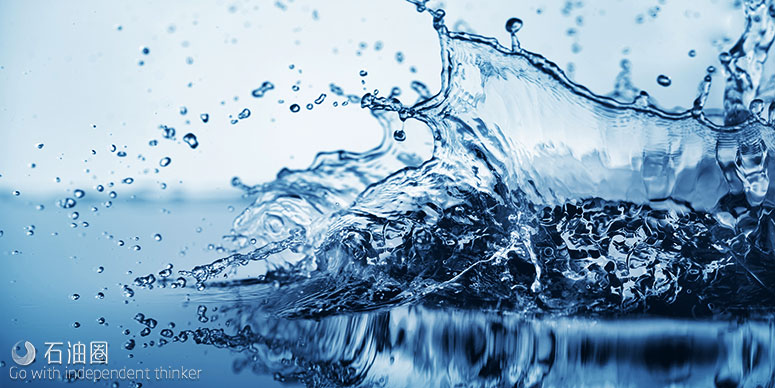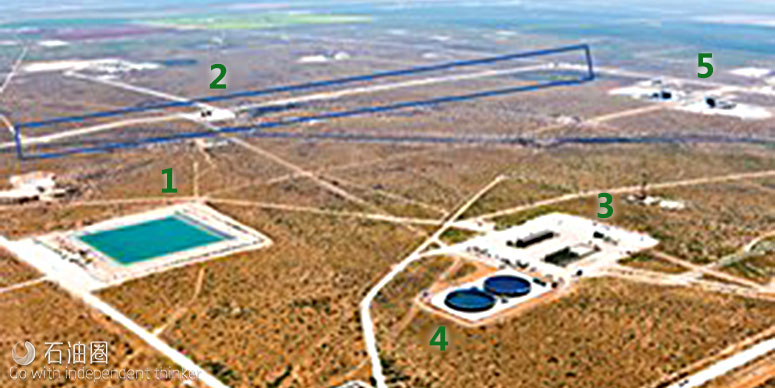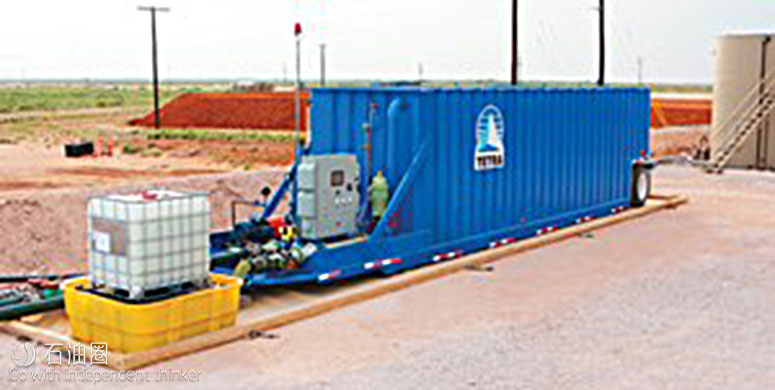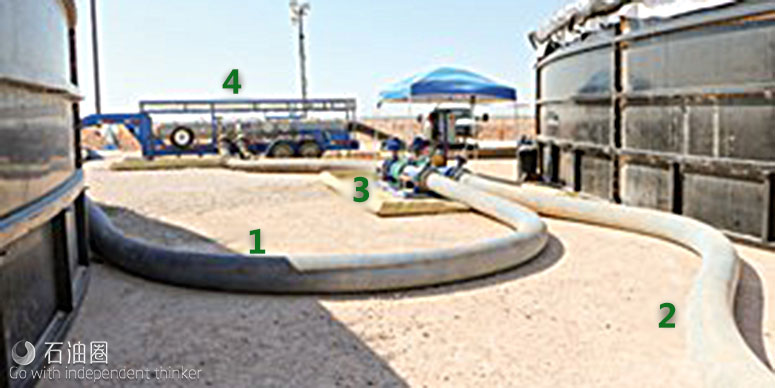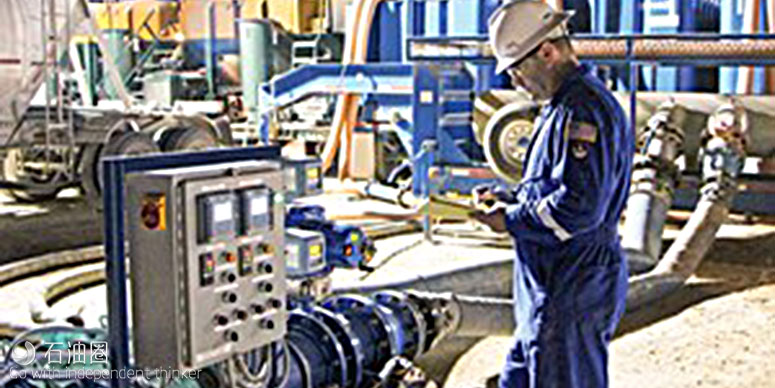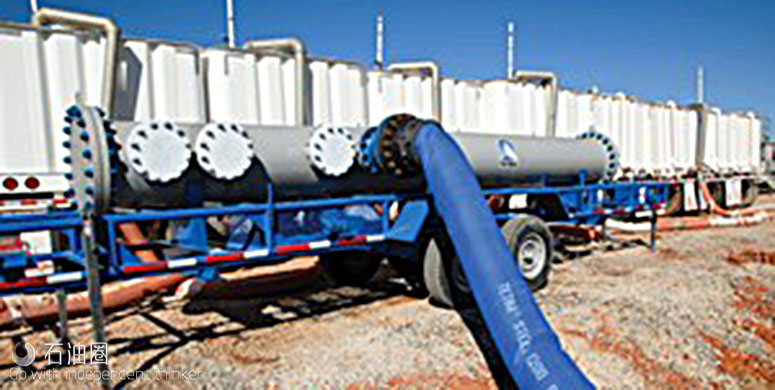The evolution of water management in support of unconventional resource plays has come in response to two main drivers: 1) increasingly expensive freshwater resources; and 2) rising regulatory pressure surrounding the disposal of produced fluids.
Historically, the provision of fresh water to support fracturing operations was a relatively straightforward matter of rising costs and complicated logistics. As industrial, agricultural and residential users all continued to increase demand for limited freshwater resources, operators had to accept rising costs associated with acquiring the water needed for fracturing.
As freshwater costs have risen, there has been a contemporaneous increase in regulatory pressure on operators, related specifically to the widely institutionalized practice of produced water disposal via injection wells. The regulatory climate surrounding water disposal wells has become much more stringent, with state regulators taking steps to mitigate the perceived impact of traditional produced and flowback water disposal on area communities. Following a magnitude 5.8 earthquake near Pawnee, Okla., in September 2016, 32 injection wells were capped. Another Oklahoma earthquake in November 2016 resulted in regulators shutting-in seven additional injection wells. In January 2017, California state regulators shut down 30 active injection wells in the Central Valley.
For operators, these two factors make new water management practices essential to reduce costs and improve margins. With oil hovering around $50/bbl, operators are striving to heighten productivity and enhance efficiency during fracturing operations, which has further driven innovation in water management. In the current climate, properly managing water resources is a mission-critical aspect of overall project success.
CHANGING ATTITUDES
A 2013 study, conducted by Halliburton and XTO Energy1, concluded that produced water with total dissolved solids (TDS) levels as high as 285,000 mg/L (28.5% salinity) was shown to generate proper cross-linked rheology for hydraulic fracturing, similar to wells that were being treated with just 20,000 ppm (2% salinity). Further studies supported this finding, with researchers concluding that high TDS levels in produced water are much less of a limiting factor than total suspended solids (TSS) levels, which can be mitigated effectively through various filtering techniques.
For operators concerned with rising costs, produced and flowback water—already at hand and available for repeated use—began to present itself as an attractive choice. Simple calculations supported this decision. If fresh water is used for fracturing operations, and all the produced water is injected into the ground, operators incur trucking, disposal, and storage costs, along with costs to acquire more fresh water for subsequent operations. With an average cost of $0.75/bbl for fresh water and disposal costs ranging from $0.50 to $2.50/bbl, it makes economic sense to reuse produced water rather than pay for fresh water.
With a growing understanding of both the viability of recycled produced water as a replacement for fresh water, and the clear cost advantage associated with the use of recycled water, operators began to recognize produced and flowback fluids recycling as a key component of the overall water management plan for unconventional resources.
Nowhere is this trend more apparent than in the Permian basin, where proactive water management is a central element of overall field development planning. In the region, operators are focusing on water handling facilities and systems that provide innovative and cost-effective water resources for stimulation operations. As the industry increasingly turns toward recycled fluids, certain best practices are beginning to emerge in produced and flowback water recycling.
PLANNING FOR THE PERMIAN
In 2017, operators used a record amount of water for fracturing operations in the Permian basin. To meet increased demand, companies are building dedicated water handling facilities and focusing on applying the best-available technologies and practices to provide water to the point-of-use in the field.
Thanks to modern fracturing practices that include higher pressures, longer laterals, and new techniques—such as zipper fracing and simultaneous well completions—operators are investing in water gathering and treatment systems, so they can cut down on transportation and disposal costs, while maintaining the water resources that they require to complete their projects.
The first challenge in water management is sourcing sufficient supply. Economics dictate locating sources as close as possible within a given operating area. A key best practice being established across the industry is utilizing non-freshwater sources when possible, including produced water, low-quality water from underground brackish reservoirs, and wastewater from industrial, power, and municipal plants. But these sources exhibit wide variabilities in water quality and consistency, requiring careful planning, treating, and processing before use in fracturing operations. However, new systems developed specifically for solving the high variability challenges inherent with non-potable water supplies make it possible to optimize water resources and minimize disposal volumes.
These systems have demonstrated their value most clearly when processing brackish water in regions with limited fresh water resources. This salty water produced throughout the Permian basin has become a significant alternative water source in many unconventional plays. For instance, in the brackish water-bearing Santa Rosa formation, located at depths of 800 to 1,200 ft, operators are drilling dedicated Santa Rosa wells and treating brackish water to remove sulfates, magnesium, iron, solids and bacteria. The treated water ensures a suitable source for fracturing Wolfcamp, Spraberry and other unconventional play wells.
BEST PRACTICES
TETRA Technologies has been a leader in working with operators to implement best practices for water infrastructure planning in the Permian basin. At the core of the company’s water management strategy is a layout of components to support area operations. Figure 1 shows the water infrastructure arrangement employed by the company during a recent reuse project. This representative layout includes: 1) freshwater storage; 2) a produced water trunk line system; 3) gathering and treatment facilities for produced water; and 4) produced water storage and blending tanks. The entire arrangement is strategically located in proximity to several active fracturing locations (5).
The planning that supports the development of this water infrastructure includes estimating produced water volumes over the life of the field, as well as frac water volumes required during the completion phase. Additional planning considers the stimulation fluid types to be employed and the types of treatment required to bring recycled frac water in line with project specifications. Each of these factors is an important element in the overall water treatment strategy.
Produced water treatment
Produced water is pumped to a centrally located gathering and treatment facility, where it is stored in above-ground storage tanks and the process of recycling begins. Typically, produced water in the Permian arrives at the facility with high levels of TDS and TSS. Additional attributes include dispersed oil and grease, dissolved gases and bacteria, as well as traces of chemical additives used in production, such as biocides, scale and corrosion inhibitors, and emulsion and reverse-emulsion breakers.
A total water analysis is a critical part of the job planning and identifies overall water compatibility to the frac fluid systems. This analysis forms the basis of the water treatment plan. Typically, the first level of treatment often involves traditional filtering methods to remove suspended solids and the application of biocides to control bacteria. A beneficial byproduct of a strong oxidizing biocide is its ability to remove iron and sulfides effectively, control TSS and residual oil, and improve the overall quality of the produced water for reuse and recycle.
A second level of treatment is provided by TETRA Technologies’ new oil recovery after production technology, called Orapt, in a water/oil separation unit, Fig 2. This stand-alone, mobile unit accelerates the separation with the use of a chemical additive and can produce water with only trace amounts of oil at 50 to 100 ppm. The Orapt system allows operators to save money on disposal, while making money through the sale of captured oil. In several cases, the volume of reclaimed oil has almost paid for the Orapt technology.
Blending. One of the challenges addressed by the company relates to balancing produced water with other sources of water to meet final project specifications for the operator’s fracturing fluid system. The company designed a patent-pending water blending controller and its patented blending manifold to ensure that recycled water is consistent throughout the entire frac specification. The blending manifold allows operators to “dial in” their chemistries and work within a very narrow range. The automated blending setup is shown in Fig. 3.
One of the main drivers influencing the success of recycled produced water is the TDS level and its consistency over a given stage. It is taken for granted that frac chemical systems can be tailored to work with high levels of TDS in the water. The amount of produced water that can be used in frac fluids now is essentially driven by the available volume and the cost of delivery.
Often, there is not an oversupply of produced water aggregated in practical areas, so operators use a blend of alternative water and produced water. These new, sophisticated frac fluid systems perform optimally with water of uniform TDS and chloride levels. Large spikes over or under the nominally required TDS and chloride level will hinder cross-linking performance and reduce cost efficiency in the form of chemical over-usage, thus negating any savings realized through recycling produced water.
The goal of blending is to use all of the available produced water, as it represents a known cost-savings under the right circumstances. To achieve optimal reuse, the blended water must have consistent quality and remain stable in terms of TDS and chloride concentrations. The most basic method employed to blend fluids is to pump known quantities of two or more components, in specified proportions, into a storage volume where simple diffusion takes place.
Water is then pumped from the storage volume and sent to the frac in real-time. This basic blending scheme often results in stratification of the fluid in the tank or pit, as the denser produced water will settle to the bottom. As the suction of the transfer pump usually pulls from the bottom, the denser, higher TDS fluid will be pumped first. As the level drops in the tank, the TDS level will drop in the water being pumped to the frac.
Additionally, if produced water is being trucked into the storage area while the frac is underway, the inevitable result is an ever-changing water quality. This common method is a batch process and, therefore, is difficult to accomplish effectively in a real-time frac transfer. Furthermore, this method usually increases blended-fluid variability that may result in screen-outs or unpredictable stimulation results.
Updated method
A more efficient technique has been adopted by TETRA Technologies for use in the Permian basin and elsewhere. This method incorporates the energy of the fluids moving through conduits in a turbulent fashion to promote the blending of the fluids. This approach is accomplished by pumping the constituents into a wye or multi-inlet manifold, where each input flow rate is controlled and, therefore, volumetric proportions are controlled. A level of homogeneous blending normally results, if the water transfer system design and hydraulic parameters promote turbulent flow after the blending apparatus. Using this method, real-time volumetric proportions are maintained, but TDS levels in the final fluid can vary as the source fluids vary.
The company’s frac water blending system includes a patent-pending automated blending controller, coupled with a patented, on-the-fly blending manifold, Figs. 4 and 5. The combination of these units provides accurate parameter-based blending and consistent blend quality, whether directly filling frac tanks or transferring water to another location. This system permits accurate and consistent blending of different sources of water in real time, removing the need for intermediate storage.
The company’s blending manifold provides consistent blend characteristics across all discharge ports. It comprises multiple inlet ports that discharge into the engineered blending chamber. The blended fluid then is distributed to the manifold body, where it exits through one main outlet for further transfer or through multiple, smaller ports typically used for filling frac tanks. Chemical injection ports also are available for adding chemical upstream of the blending chamber.
The blending controller was developed to enable enhanced produced water recycling and, in some cases, to permit produced water reuse altogether. It effectively measures the prescribed blending parameter post-blend and automatically adjusts affluent flowrates locally to achieve the blended water setpoint. This measurement significantly reduces frac water quality variability, as any variation in either influent stream— whether it is caused by actual water-quality or flowrate variations—is mitigated by the controller changing the blend ratio in real time. The resulting frac-water blend remains within the acceptable parameter range with a maximized produced water portion, thereby optimizing reuse.
Having this technology onsite also affords the opportunity to measure incoming water, as well as the blended water quality. The “pre” and “post” data points are logged and provide real-time trending. Having a visual reference of how the different waters evolve is invaluable, as unexpected events related to water quality can be predicted and mitigated by studying the trends. Logged data are used to provide job reports and verify that the system is performing as required. Also, blending data can be transmitted to SCADA systems for real-time monitoring. When something goes wrong downhole, water is often the usual suspect, so being able to demonstrate that the blend is on-target saves valuable time while troubleshooting problems on the frac.
CONCLUSION
In the Permian basin, the combination of different operators, frac companies, frac chemical schemes, and water qualities is ever-changing. Some companies do not consider high-level blending accuracy to be necessary in their circumstances. Others demand it. However, all parties now agree that cutting-edge water management in unconventional resource plays is vital to overall project success.
Based on average water acquisition and disposal rates, every barrel of produced water reuse can save up to $2/bbl. On a recent job in support of four multi-well pads, the use of frac-water blending enabled the operator to increase produced water usage from 25% to 55%, with no impact on the fracture treatment, which led to more than 600,000-bbl reduction in freshwater usage over four pads. This reduction translated into $1.5 million in savings to the client, in water acquisition and disposal costs.

 石油圈
石油圈